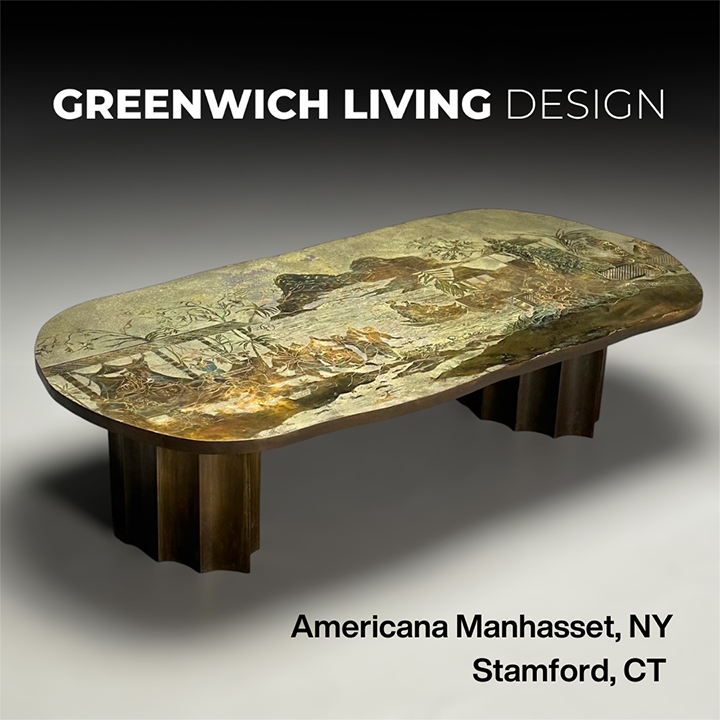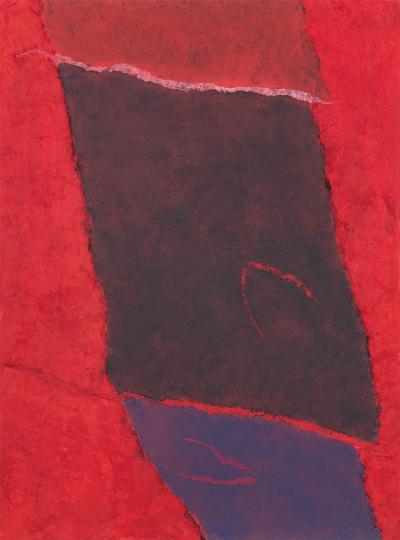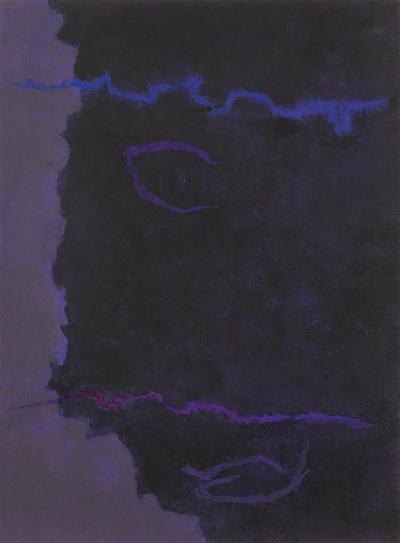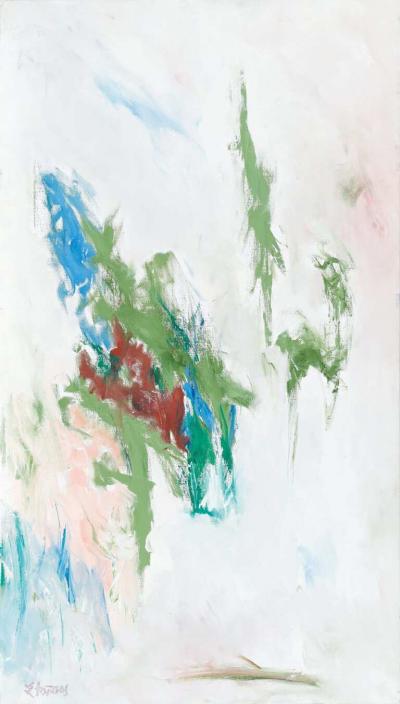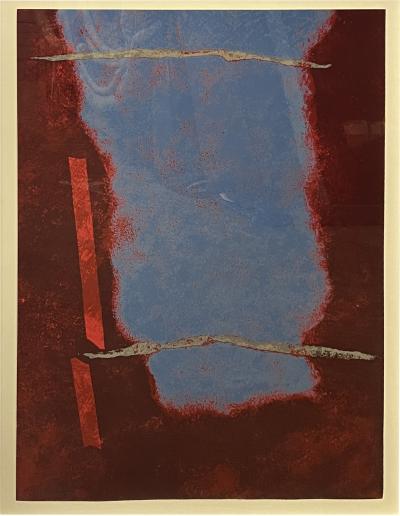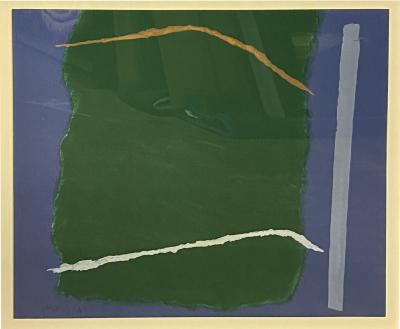Theodoros Stamos
American, 1922 - 1997
Theodoros Stamos, a pioneering figure among the first-generation Abstract Expressionists, left an indelible mark with his later career paintings—expansive canvases illuminated by dissolved light. Initially underestimated by influential critic Clement Greenberg, Stamos later earned recognition from Greenberg, who candidly admitted his initial misjudgment, stating, "I scorched his show, and I was wrong. You keep on learning" (Falk 3138).
Reflecting on his artistic philosophy, Stamos asserted, "The great figurative painters were involved with grandeur of vision, using the figure as a means to an end, whereas today the best of the abstract painters are also involved with a grandeur of vision using color as their means toward a new space-light" (Herskovic 318). Stamos' journey transcended conventional boundaries, embracing a transformative vision that unfolded through his adept use of color and light.
Beyond his artistic endeavors, Stamos contributed significantly to art education, holding positions at esteemed institutions such as the Art Students League, Columbia University, Black Mountain College, and Brandeis University. Born in Manhattan to Greek immigrant parents, Stamos initially delved into sculpture, studying at the American Artist's School from 1936 to 1939. Shifting to painting in 1939, he was primarily self-taught, embarking on a creative exploration that would redefine his artistic trajectory.
In the early stages of his painting career, Stamos' creations bore semblances to the works of Mark Rothko and William Baziotes, featuring amorphous shapes and intricate lines. His color palette manifested in tonal clusters, exuding a sense of vagueness and undifferentiated brilliance. During the 1940s, Stamos operated a framing shop near Union Square, catering to modernist luminaries like Arshile Gorky and Fernand Leger. His solo exhibition at the Betty Parsons Gallery in 1943 marked a significant milestone.
The evolution of Stamos' style unfolded in distinct phases, with the 1950s witnessing a departure from controlled compositions to more dynamic, emotive, and confrontational works. In 1950, he gained recognition as the youngest artist in the famed "irascibles" photograph, capturing leading Abstract Expressionists. The 1960s brought forth Stamos' "Sun Box" series, characterized by monumental shapes that engulfed the canvas, evoking atmospheric light and organic expansion. The later works of Theodoros Stamos stand as a testament to his unwavering commitment to artistic innovation and the exploration of new realms of visual expression.
Reflecting on his artistic philosophy, Stamos asserted, "The great figurative painters were involved with grandeur of vision, using the figure as a means to an end, whereas today the best of the abstract painters are also involved with a grandeur of vision using color as their means toward a new space-light" (Herskovic 318). Stamos' journey transcended conventional boundaries, embracing a transformative vision that unfolded through his adept use of color and light.
Beyond his artistic endeavors, Stamos contributed significantly to art education, holding positions at esteemed institutions such as the Art Students League, Columbia University, Black Mountain College, and Brandeis University. Born in Manhattan to Greek immigrant parents, Stamos initially delved into sculpture, studying at the American Artist's School from 1936 to 1939. Shifting to painting in 1939, he was primarily self-taught, embarking on a creative exploration that would redefine his artistic trajectory.
In the early stages of his painting career, Stamos' creations bore semblances to the works of Mark Rothko and William Baziotes, featuring amorphous shapes and intricate lines. His color palette manifested in tonal clusters, exuding a sense of vagueness and undifferentiated brilliance. During the 1940s, Stamos operated a framing shop near Union Square, catering to modernist luminaries like Arshile Gorky and Fernand Leger. His solo exhibition at the Betty Parsons Gallery in 1943 marked a significant milestone.
The evolution of Stamos' style unfolded in distinct phases, with the 1950s witnessing a departure from controlled compositions to more dynamic, emotive, and confrontational works. In 1950, he gained recognition as the youngest artist in the famed "irascibles" photograph, capturing leading Abstract Expressionists. The 1960s brought forth Stamos' "Sun Box" series, characterized by monumental shapes that engulfed the canvas, evoking atmospheric light and organic expansion. The later works of Theodoros Stamos stand as a testament to his unwavering commitment to artistic innovation and the exploration of new realms of visual expression.
